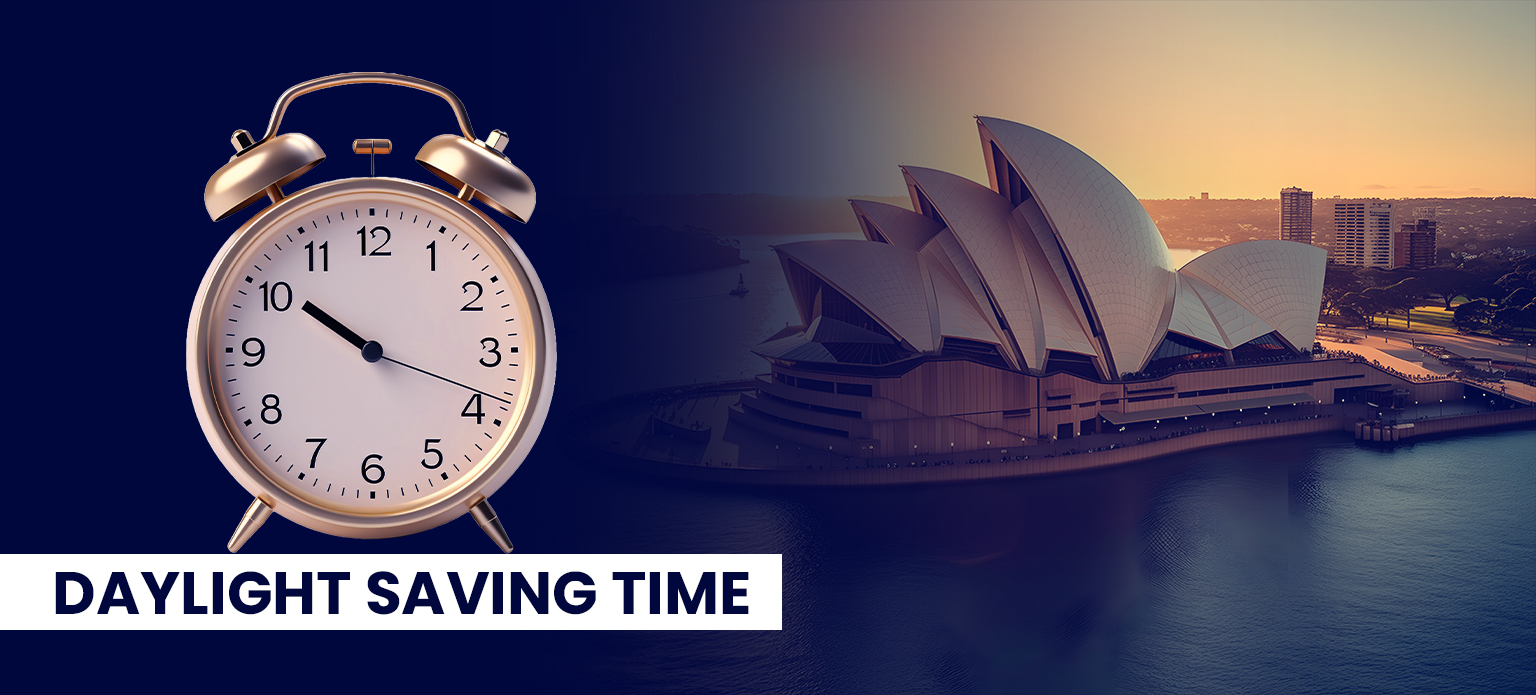
Daylight Saving in Australia: A Guide
- Categories All Study in Abroad Blogs, Study in Australia, Studying Abroad
- Date April 4, 2024
Australia has a wide land stretched along the curvature of the Earth. Lands with such location advantages receive extra hours of sunlight for over 6 months. To conserve energy and maximise usage, Australia among other countries practices daylight saving. First proposed by George Hudson, an entomologist and astronomer, in 1895, daylight saving advances clocks by an hour from the standard time. With this alteration in their clock, winters have an hour of extended availability of usable daylight coinciding with the working hours of the population. Factually, it is wise. Why waste an hour of good sun sleeping or work in the dark?
The Cause
Let’s get some science into us. The Earth rotates and revolves around the sun with a tilted axis. Each rotation takes 23 hours, 56 minutes and 4 seconds forming one of our menial and exceptional days. Further, the revolution takes 365.242 days which is roughly a year. This is a story of every day. But what changes is our distance from the sun. The revolution orbit is elliptical, or slightly oval-shaped. As a result, the times of sunsets and sunrises differ all year long based on the earth’s facing towards the sun. Earthians benefit from different seasons but the daylight is maximum during summer and minimum in winter. Secondly, the days are longer in summer.
Sydney witnesses the sunrise at about 4:30 in the morning during summer but 7 during winter. With daylight saving, summer can now have sunrise by 5:30 AM and an extra hour of sun in the evening. The alternation is not limited to the clocks but all that it fruits. Shops open an hour late. Colleges and offices begin an hour late. International students in Australia, too, will have to adjust their sleep and food cycle as the custom kicks in and wears off every year.
Daylight Saving Time in Australia
First implemented during World War I in 1916, it is now a custom adopted by several countries. As all new measures do, Daylight Saving Time didn’t come without stirring the population of Australia. 1967 was the year of a miserable drought in Tasmania. It was only after that that the government of Australia realised how DST could not only improve lives but save them. Arguably, the custom is still found unnecessary and confusing. Well, so are global warming and water scarcity. People don’t collectively believe in them until they hit them hard.
Australia has three main time zones: Australian Eastern Standard Time (UTC +10), Australian Central Standard Time (UTC +9.5) and. Australian Western Standard Time (UTC +8). DST starts on the first Sunday of October as per the Energy Policy Act of 2005. The clocks remain advanced till the first Sunday of April and set back to the original time afterwards. And no, there’s no manual change involved. Not until you have your grandmother’s cuckoo clock.
Which States Observe Daylight Saving Time in Australia?
Clearly, DST is not uniform in all states and territories of Australia. The Australian Capital Territory, New South Wales, South Australia, Victoria, Tasmania, and Norfolk Island agree to DST. Exceptionally, Lord Howe Island only implements 30 minutes of DST and Queensland does none. To support demographic and geographic requirements, Australia turns into a pumpkin with 5 time zones during the summer. Apart from the 3 main ones, Australia Central Western Standard Time (UTC+8.75) and Lord Howe Standard Time (UTC+10:5) support their rebels. Your time depends on where you are. Geographically. But, oh well, also in life.
Effects on Your Life
“Juggling academic work is a task enough. DST is just an add-on to students’ struggles.”. Yes and no. Yes, the springs between time can cause sleep disorders and stress. But no, it is not much to do. Moreover, DST provides students with more light to enjoy. But it’s not just that. Since the implementation, Australia has seen a reduction in crime rates, robbery and road accidents, At the same time, tourism and overall population mood and energy stay at the highest.
Associate Professor Sveta Postnova is a lecturer in Brain Dynamics and Neurophysical. She said that DST shifts our daily activities and can introduce a minor circadian misalignment. Scientific data does not support this. However, Dr Nicholas Fuller, a weight loss expert from the Charles Perkins Centre supports her statement.
Prepare to Take Off
The health effects could be minor but the custom of Daylight Saving does blow your daily routine. Students should have strategies in place beforehand on how they could deal with the shifting time. When the phone, computer and cable box clock are updated automatically, students are still responsible for altering their microwave clock, table clock or granny’s cuckoo. Take a deep breath and move them an hour ahead. If it helps, you can pretend that you are heading to the future. As the time approaches, start going to bed 15-30 minutes early so your shifts are gradual. The same could be done with the meal time. While these tasks seem minor, we assure you the results are not.
To seek further guidance, connect with us on (+91) 079 6000 6000 | (+91) 9624000201. At Studywise International, we help aspirants live their dream academic lives. From college selection and application to visa process and IELTS to easy settlement abroad, we ensure that they get the best of what they deserve.
You may also like

Ireland Intake 2024-25: Universities & Preparation Timeline

TOEFL Scoring System and Validity


